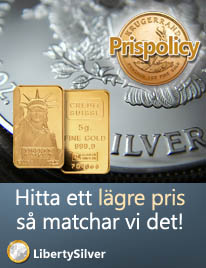|
A few things you need to be aware of.
While it surely detect those fake bars made of lead and most other alloys as not being silver it'll not detect copper and a few copper rich alloys like bronze (brass is somewhere in between). It will detect cupro nickel easily however.
The reason is that copper has almost as little electrical resistance as silver and so the eddy currents induced by the magnet will be almost as strong. So on a piece of copper the magnet will slide down almost as slow as on silver (disregarding mechanical surface differences). Of course it's a teeny tiny faster but the difference will be unnoticeable in real life. So to make an easy fake silver bar just silverplate a copper bar marked with silver stamps. It'll probably ring almost like silver too. Of course copper is not quite as dense but again it's close enough not to be detectable in real life when dealing with a "silver"bar unless you measure both weight and volume (put it down in water measuring it's displacement). Silvered copper coins may be easier detectable as they're well defined size and weights.
Also depending on the size of the neo magnet after a certain thickness you'll not notice a difference in speed. Need to know when dealing with coins. My personal experience is that with a small magnet (10*5 mm) you'll not see a difference when thicker than two or three millimeters. The best to see how your magnet behaves is trying a known good coin of similar thickness. In other words it'll not detect the few leadfilled bars unless they're filled close to surface. (Although I suspect those will be detected by the ring test).
|

